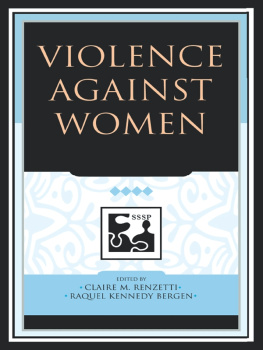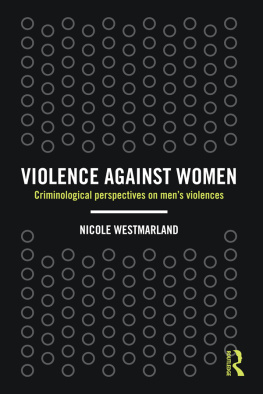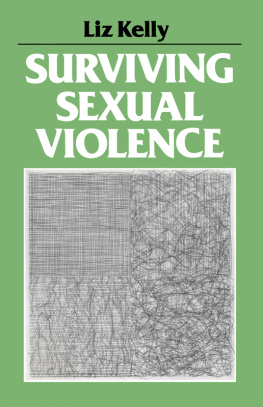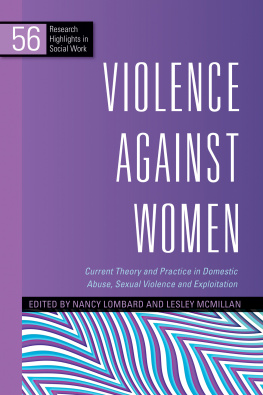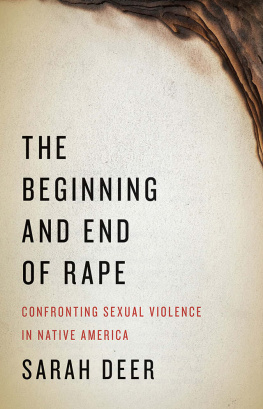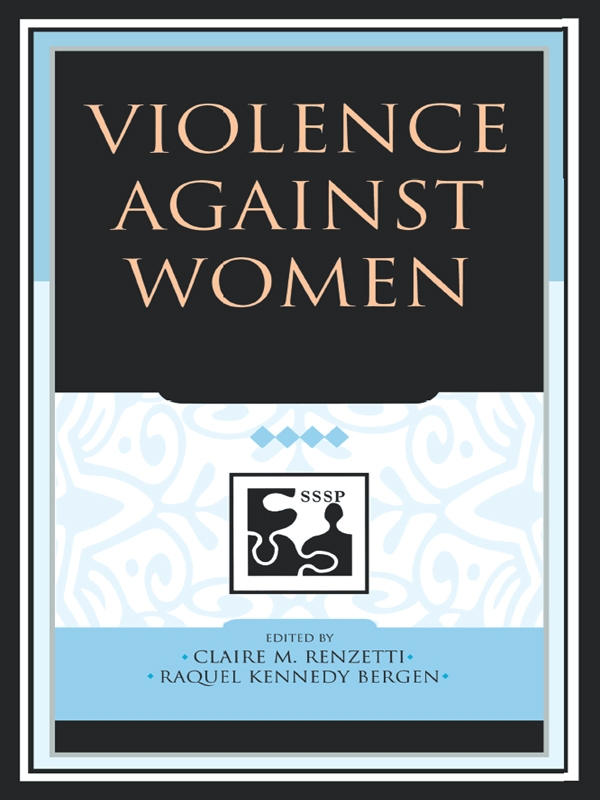Claire M. Renzetti is professor of sociology at St. Josephs University in Philadelphia. She is editor of the international, interdisciplinary journal Violence Against Women, coeditor of the Violence Against Women book series (Sage Publications), and editor of the Gender, Crime, and Law book series (Northeastern University Press). She has authored or edited fifteen books as well as numerous book chapters and articles in professional journals. Her current research focuses on the violent victimization experiences of women public housing residents. Dr. Renzetti is a past vice-president (20012002) of the Society for the Study of Social Problems as well as president-elect (20042005) of the Society.
Raquel Kennedy Bergen is associate professor and chair of the Department of Sociology at St. Josephs University in Philadelphia. She is the author of numerous scholarly publications and the books, Wife Rape : Understanding the Response of Survivors and Service Providers and Issues in Intimate Violence. With Claire Renzetti and Jeff Edleson she edited Sourcebook on Violence Against Women and violence Against Women : Classic Statements.
CHAPTER 1
Riding the Bull at Gilleys
CONVICTED RAPISTS DESCRIBE THE REWARDS OF RAPE
Diana Scully and joseph Marolla
Over the past several decades, rape has become a medicalized social problem. That is to say, the theories used to explain rape are predicated on psychopathological models. They have been generated from clinical experiences with small samples of rapists, often the therapists own clients. Although these psychiatric explanations are most appropriately applied to the atypical rapist, they have been generalized to all men who rape and have come to inform the publics view on the topic.
Two assumptions are at the core of the psychopathological model; that rape is the result of idiosyncratic mental disease and that it often includes an uncontrollable sexual impulse (Scully and Marolla, 1985). For example, the presumption of psychopathology is evident in the often cited work of Nicholas Groth (1979). While Groth emphasizes the nonsexual nature of rape (power, anger, sadism), he also concludes, Rape is always a symptom of some psychological dysfunction, either temporary and transient or chronic and repetitive (Groth, 1979:5). Thus, in the psychopathological view, rapists lack the ability to control their behavior; they are sick individuals from the lunatic fringe of society.
In contradiction to this model, empirical research has repeatedly failed to find a consistent pattern of personality type or character disorder that reliably discriminates rapists from other groups of men (Fisher and Rivlin, 1971; Hammer and Jacks, 1955; Rada, 1978). Indeed, other research has found that fewer than 5 percent of men were psychotic when they raped (Abel et al., 1980).
Evidence indicates that rape is not a behavior confined to a few sick men but many men have the attitudes and beliefs necessary to commit a sexually aggressive act: In research conducted at a midwestern university, Koss and her coworkers reported that 85 percent of men defined as highly sexually aggressive had victimized women with whom they were romantically involved (Koss and Leonard, 1984). A recent survey quoted in The Chronicle of Higher Education estimates that more than 20 percent of college women are the victims of rape and attempted rape (Meyer, 1984). These findings mirror research published several decades earlier, which also concluded that sexual aggression was commonplace in dating relationships (Kanin, 1957, 1965, 1967, 1969; Kirkpatrick and Kanin, 1957). In their study of 53 college males, Malamuth, Haber, and Feshback (1980) found that 51 percent indicated a likelihood that they, themselves, would rape if assured of not being punished.
In addition, the frequency of rape in the United States makes it unlikely that responsibility rests solely with a small lunatic fringe of psychopathic men. Johnson (1980), calculating the lifetime risk of rape to girls and women aged 12 and over, makes a similar observation. Using Law Enforcement Assistance Administration and Bureau of Census Crime Victimization Studies, he calculated that, excluding sexual abuse in marriage and assuming equal risk to all women, 20 to 30 percent of girls now 12 years old will suffer a violent sexual attack during the remainder of their lives. Interestingly, the lack of empirical support for the psychopathological model has not resulted in the de-medicalization of rape, nor does it appear to have diminished the belief that rapists are sick aberrations in their own culture. This is significant because of the implications and consequences of the model.
A central assumption in the psychopathological model is that male sexual aggression is unusual or strange. This assumption removes rape from the realm of the everyday or normal world and places it in the category of special or sick behavior. As a consequence, men who rape are cast in the role of outsider and a connection with normative male behavior is avoided. Since, in this view, the source of the behavior is thought to be within the psychology of the individual, attention is diverted away from culture or social structure as contributing factors. Thus, the psychopathological model ignores evidence which links sexual aggression to environmental variables and which suggests that rape, like all behavior, is learned.
Cultural Factors in Rape

